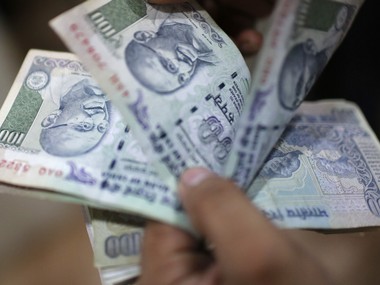The Chinese have a saying: Don’t sell your ox before you’ve found a horse. Bond markers might be celebrating the government’s Monday announcement – that it would ease back on its borrowing programme in the first half of 2018-19 (FY19) – a little too early. On Tuesday, yields on the 10-year government bond fell by more than 33 basis points, or bps (a basis point is one hundredth of a percentage point), from 7.68 to 7.33 percent, meaning bond portfolios just got more valuable. But let’s quickly review the government’s announcement: a) it would borrow Rs 2.88 lakh crore instead of the estimated Rs 3.6 lakh crore, or roughly Rs 70,000 crore less, in the first half of the financial year; b) compared to its hitherto weekly average borrowing of Rs 15,000 crore, it would borrow Rs 12,000 crore; c) it would draw an additional Rs 25,000 crore from the National Small Savings Fund (NSSF) – but more on that later; and d) it would also reduce its buyback of government securities. The government said it would add two benchmarks for the two and 5-year securities, in addition to the current 10-year bond (they are benchmarks because their yields are used to set interest rates in the wider economy like those on housing loans, consumer loans and the borrowing costs of non-bank financial companies or NBFCs). Bond dealers are happy because they have been petitioning the government to manage its borrowing programme – essentially how it finances its fiscal deficit – to lower 10-year bond yield, which had gone up to 7.8 percent. Higher yields usually lead to higher volatility, because long-term borrowing get harder and more uncertain. [caption id=“attachment_4366925” align=“alignleft” width=“380”]  Representative image. Reuters[/caption] Banks – public sector banks in particular – are happy because lower yields mean higher bond prices, and thus make their bond portfolios more valuable and profitable, something they desperately need. In January 2018, a report by ICRA, the ratings agency estimated that bond portfolio losses in the October to December 2017 quarter at Rs 15,500 crore. These changes in the government borrowing programme will reduce borrowing costs for the government itself: It will pay less in interest on its borrowing in future years. But is that the whole story? Not really. The government is taking some calculated risks, and the calculations bear closer scrutiny. First, the changed borrowing programme implies the government will shift the greater part of its borrowing into the short-term category from the long term category. That means that the government will finance the greater part of its long-term development and capital expenditure with short-term borrowing: the classical asset-liability mismatch that currently plagues the banking system and is the source of its non-performing assets (NPAs) problem. Ultimately, it could increase the costs of development projects when interest rates rise. Not a good thing. Second, these changes mean that the government has changed the way it finances the fiscal deficit, but does not reduce it. In other words, total government expenditure will not come down. By extension, that could bunch the rest of the borrowing programme into the second half of FY19, which merely postpones the increase in bond yields; the current reduction is only temporary. In the second half of the year, they could rise sharply again. Ok, the government has another string to its bow: The cash management bill (CMB) – a borrowing instrument of less than 91-day duration, to manage short-term cash-flow. The government said it could raise up to Rs 1 lakh crore using the CMB. When used in the fourth quarter of the financial year, this has the advantage of transferring repayment to the first quarter on the following year. Third, by shifting part of its market borrowing programme to the NSSF, a non-market source of finance, the government could be messing with bond market equilibrium conditions. Will that be a permanent shift or a temporary fix for current problems? Look back to the US Federal Reserve’s (the Fed) announcement in 2013 about its intention of ‘tapering’ its asset purchase programme: bond yields spiked suddenly, sending government bond markets around the world into a sort of tizzy, and increasing volatility. Not exactly what we need. Budget estimates put the proposed NSSF investment in government securities at Rs 99,600 crore. State governments securities, except those issued by Arunachal Pradesh, Delhi, Karnataka and Madhya Pradesh, are excluded from NSSF instruments. This implies that he central government will take it all and leave nothing for the four states. Granted, the NSSF will invest another Rs 1.3 lakh crore in central government agency debt (FCI, NHAI, etc.) and the government could take some from there. But somebody will have to do without a part of anticipated funding. Plus, that amount is whole-year NSSF investments, not just the first half. Fourth, there is the question over the predictability of other cash inflows, like taxes, that help manage the fiscal deficit and finance government expenditure, and that means the Goods & Services Tax, or GST. In its current form, the GST is three boxes: GST, IGST and compensatory cess. The inability to assess the amount of each could complicate expenditure management, and by extension, the borrowing programme. There are just too many variables in the assumptions that underlie the government’s announcement. The calculated risk could become miscalculations, and that cannot be good for bond markets, the players and the borrowing public at large. So keep the champagne corked, and on ice, until after September 2018. (The writer is a senior columnist. He tweets @shrisrinivas)
There are just too many variables in the assumptions that underlie the government’s announcement.
Advertisement
End of Article


)
)
)
)
)
)
)
)
)



